Posts Tagged: University of California
Ready or Not, Here I Come!
Ready or not, here I come! "Wait, can you slow down a bit?" I ask. "I can't focus when you move so fast!" No, sorry! I'm in a hurry! Anthophora urbana, a solitary, ground-nesting bee, frequents our garden to forage on the catmint (Nepeta) and...
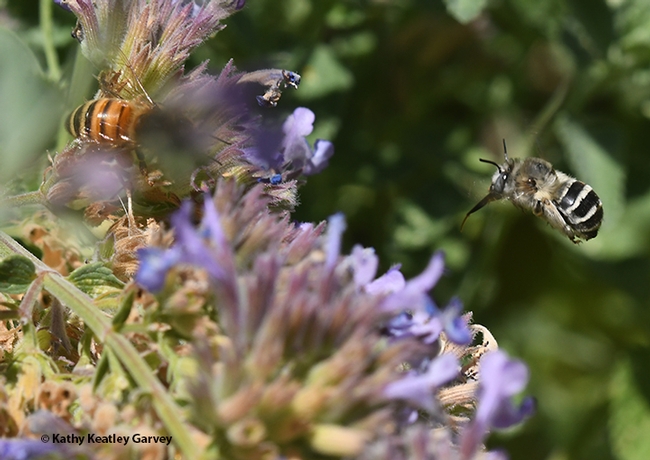
A digger bee, Anthophora urbana in flight, as it heads for another catmint blossom. (Photo by Kathy Keatley Garvey)
Welcome to the World of Monarchs, Greta!
Welcome to the world of monarchs, Greta! We don't normally name the monarch butterflies we rear, but we decided that the first one reared from an egg "The Greg Way" would be named for Greg--naturalist Greg Kareofelas, associate at the Bohart Museum...
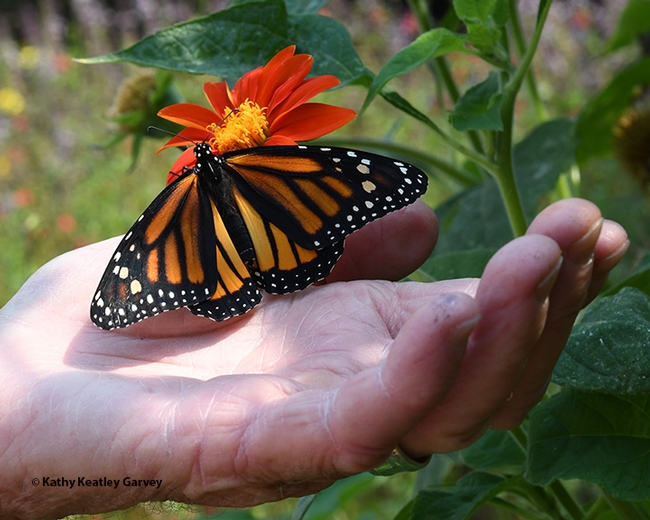
This monarch caterpillar was reared from an egg collected on a tropical milkweed, Asclepias curassavica, in a Vacaville pollinator garden. (Photo by Kathy Keatley Garvey)
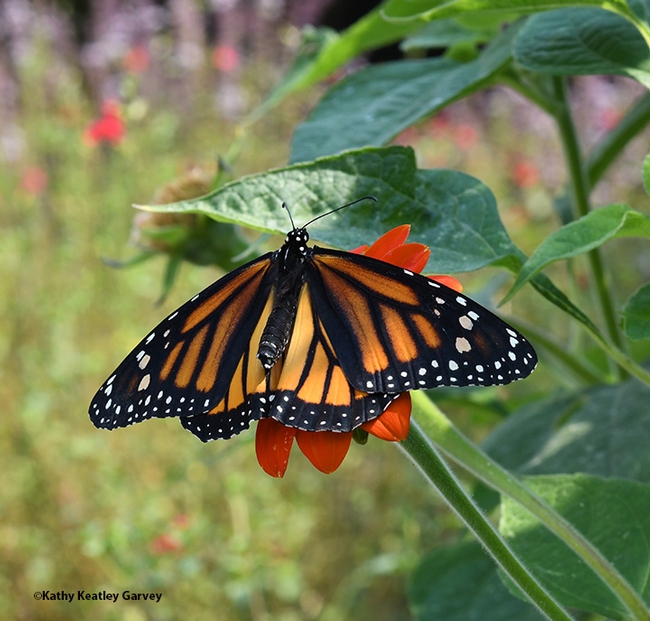
The newly eclosed monarch caterpillar named "Greta" latches onto a Mexican sunflower, Tithonia rotundiflora. (Photo by Kathy Keatley Garvey)
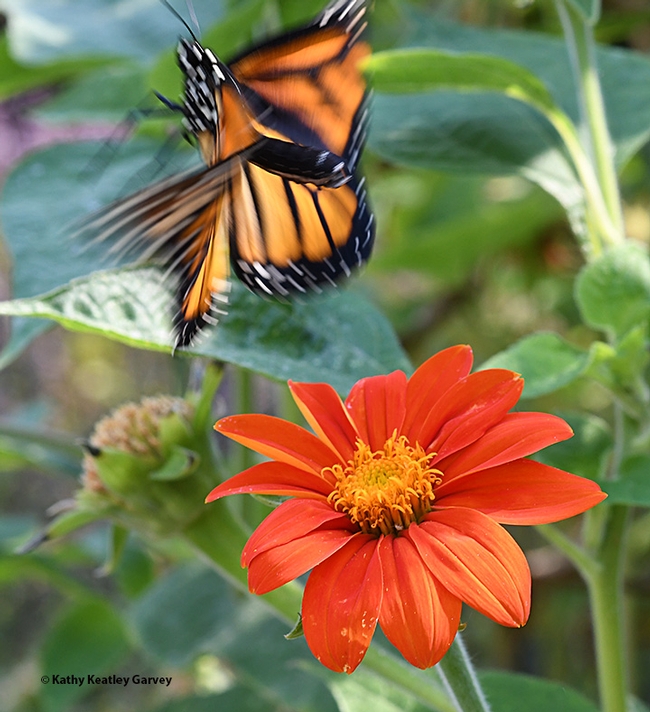
Greta, a monarch butterfly reared from an egg, is anxious to get where she's going. And fast. (Photo by Kathy Keatley Garvey)
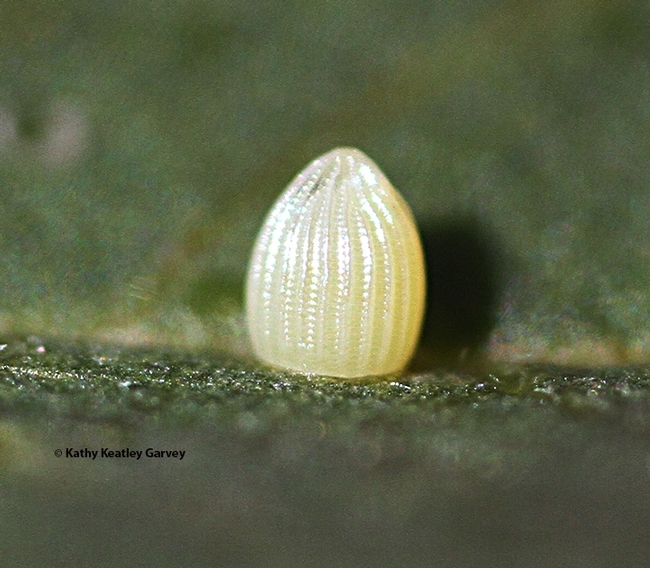
Monarch butterflies start out as a near microscopic egg. This image was taken with a Canon MPE-65mm lens. (Photo by Kathy Keatley Garvey)
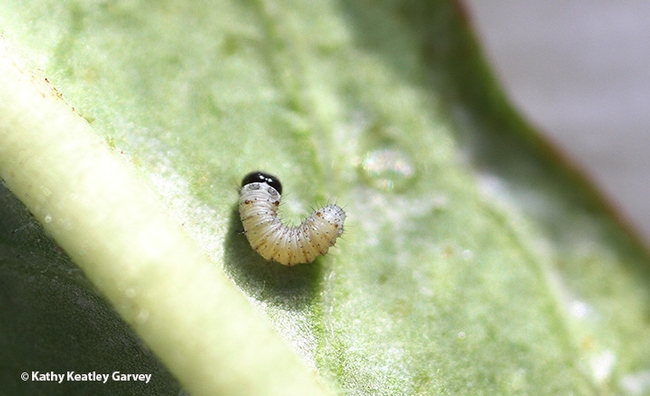
After hatching from egg to larva (caterpillar), it eats its shell and then begins munching on milkweed. (Photo by Kathy Keatley Garvey)
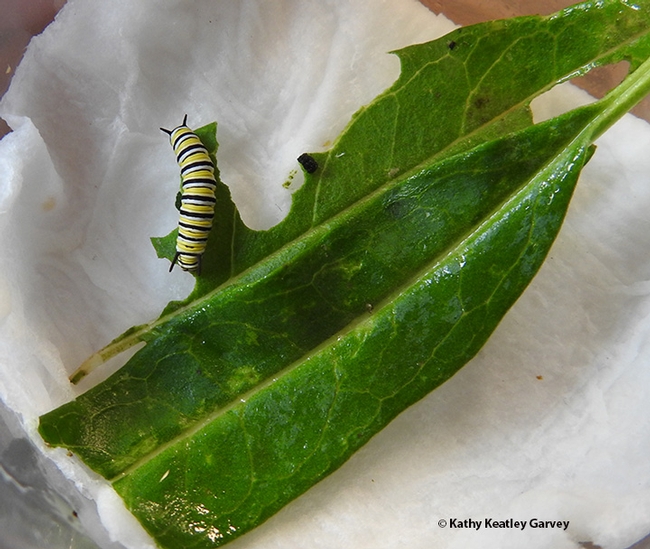
The monarch caterpillar munches milkweed; it will go through five instars. (Photo by Kathy Keatley Garvey)
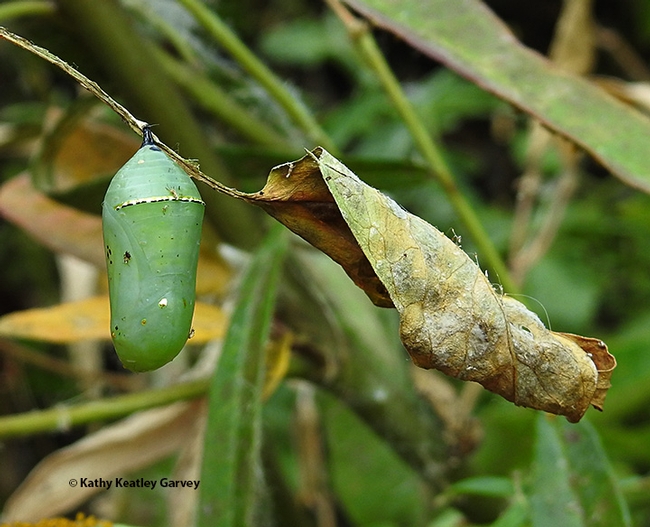
The jade-green monarch chrysalis is one of nature's jewels. (Photo by Kathy Keatley Garvey)
Got a Question about COVID-19? UC Davis-Based Webinar Set April 23
Can infected mosquitoes transmit COVID-19? That's one of the questions slated to be asked at the UC Davis-based COVID webinar, set from 1:30 to 4 p.m., Thursday, April 23, via Zoom and YouTube. Folks are submitting their questions now, and you...
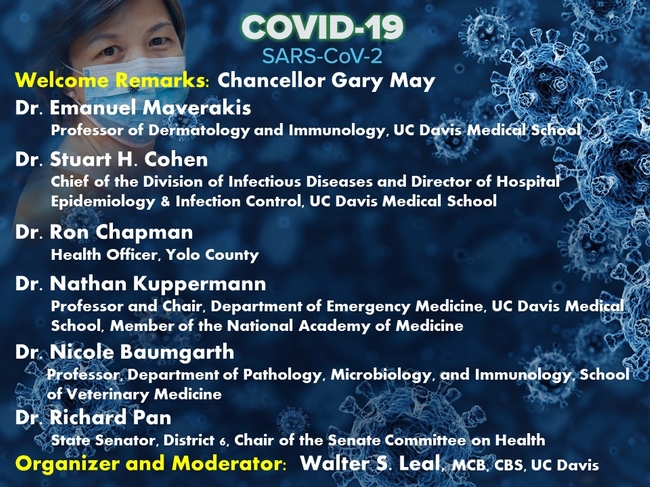
These are the speakers at the UC Davis-based COVID-19 webinar on Thursday, April 23. (Graphic by Walter Leal)
A Grand Opening--And Bees Were Nowhere in Sight
It was a grand opening of the USDA-ARS bee research facility at the University of California, Davis, but the bees were nowhere in sight. That's because bees don't fly until the temperature hits around 55, and the thermometer on that wintry day (Jan. 7)...
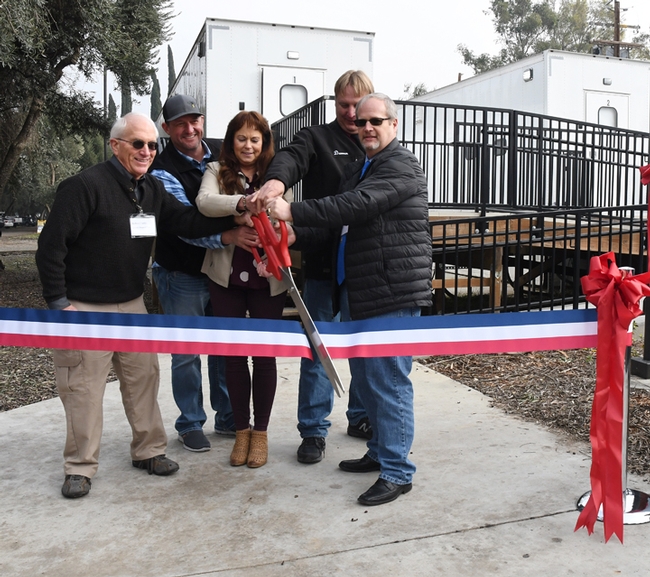
Ready to cut the ribbon (from left) are almond pollination consultant Robert Curtis of Carmichael, retired director of agricultural affairs, Almond Board of California; Brad Pankratz of Can-Am Apiaries, Orland; Jackie Parks-Burris of Jackie Park-Burris Queen Bees, Palo Cedro and a past president of California State Beekeepers' Association; Darren Cox, Logan, Utah, past president of American Honey Producers; and Kelvin Adee of Bruce, S.D., president of American Honey Producers.
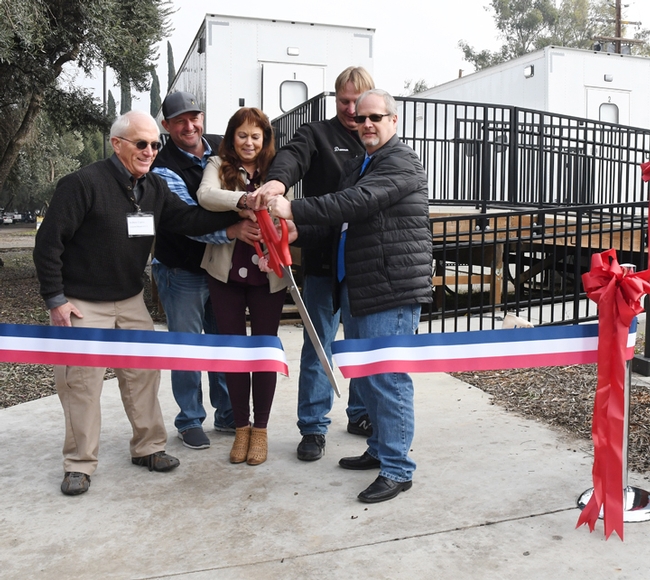
And it's snipped! From left are almond pollination consultant Robert Curtis of Carmichael, retired director of agricultural affairs, Almond Board of California; Brad Pankratz of Can-Am Apiaries, Orland; Jackie Parks-Burris of Jackie Park-Burris Queen Bees, Palo Cedro and a past president of California State Beekeepers' Association; Darren Cox, Logan, Utah, past president of American Honey Producers; and Kelvin Adee of Bruce, S.D., president of American Honey Producers.
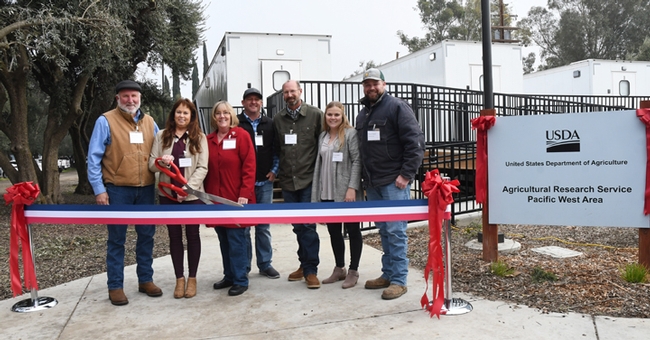
California State Beekeepers' Association members pose for a photo. From left are Steve Godlin, Jackie Park-Burris, Valeri Severson, Brad Pankratz, Buzz Landon, Brooke Palmer, and Trevor Tauzer.
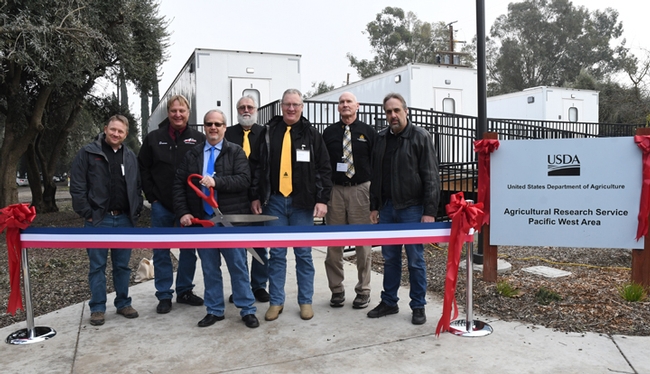
The American Honey Producers Association with the ribbon. Wielding the scissors is Kelvin Adee of Bruce, S.D., president of American Honey Producers. The group later held a conference in Sacramento.
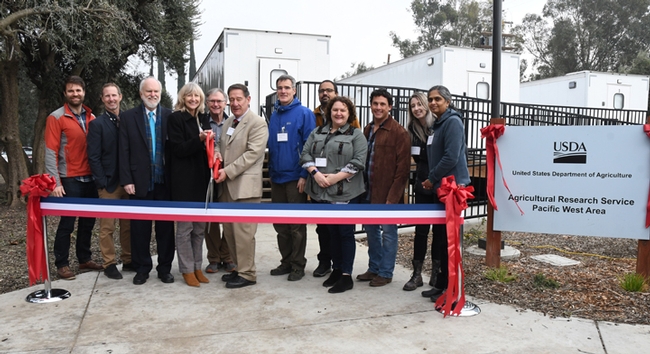
UC Davis-affiliated personnel pose with USDA personnel for a ribbon-cutting photo. From left are Charley Nye, UC Davis; Paul Pratt of USDA; Kevin Hackett of USDA; Anita Oberbauer of UC Davis; Eric Mussen of UC Davis; Robert Matteri of USDA; Neal Williams, Brian Johnson, Elina Niño and Bernardo Niño, all of UC Davis; and Julia Fine and Arathi Seshadri, USDA.
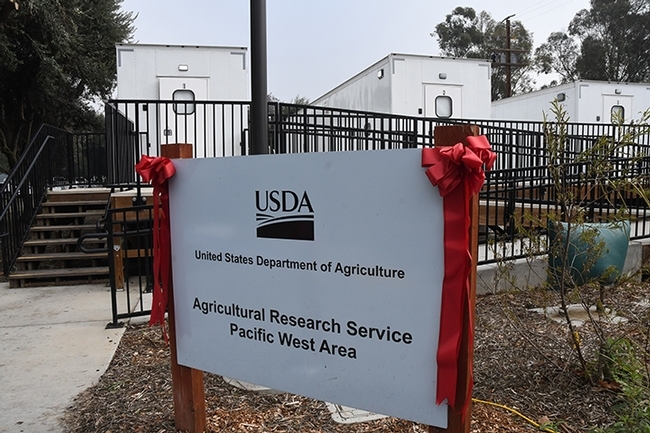
Much collaboration, cooperation, and camaraderie is expected here at the newly opened USDA-ARS bee research facility on Bee Biology Road, UC Davis.
Meet the President of the American Honey Producers
January is cold in Bruce, S.D., where the average nighttime temperature dips to 3 degrees. Beekeeper Kelvin Adee, who hails from Bruce, isn't experiencing any of that right now. He's in California--and so are his bees for the almond pollination...
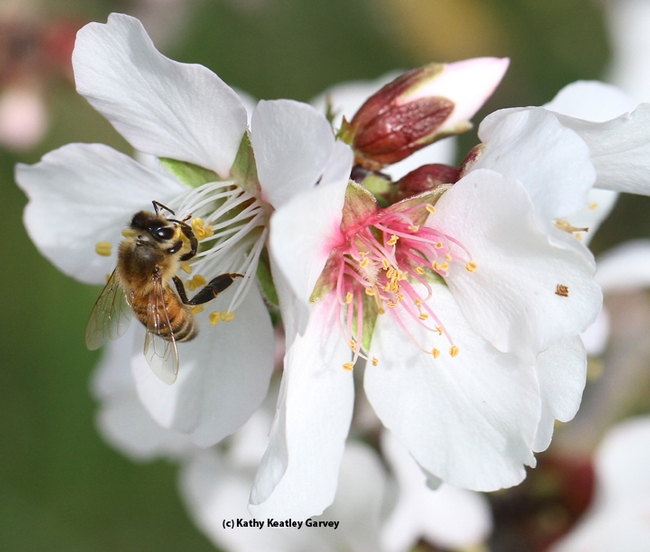
Beekeepers are gearing up for the California almond polination season, which usually starts around Feb. 14. Here, in this file photo, an industrious bee forages on an almond blossom. (Photo by Kathy Keatley Garvey)

